My family’s favorite homemade mashed potatoes are creamy, easy, and incredibly delicious. Thanks to a few simple ingredients and tricks for cooking the potatoes, these are some of the best mashed potatoes you’ll make.
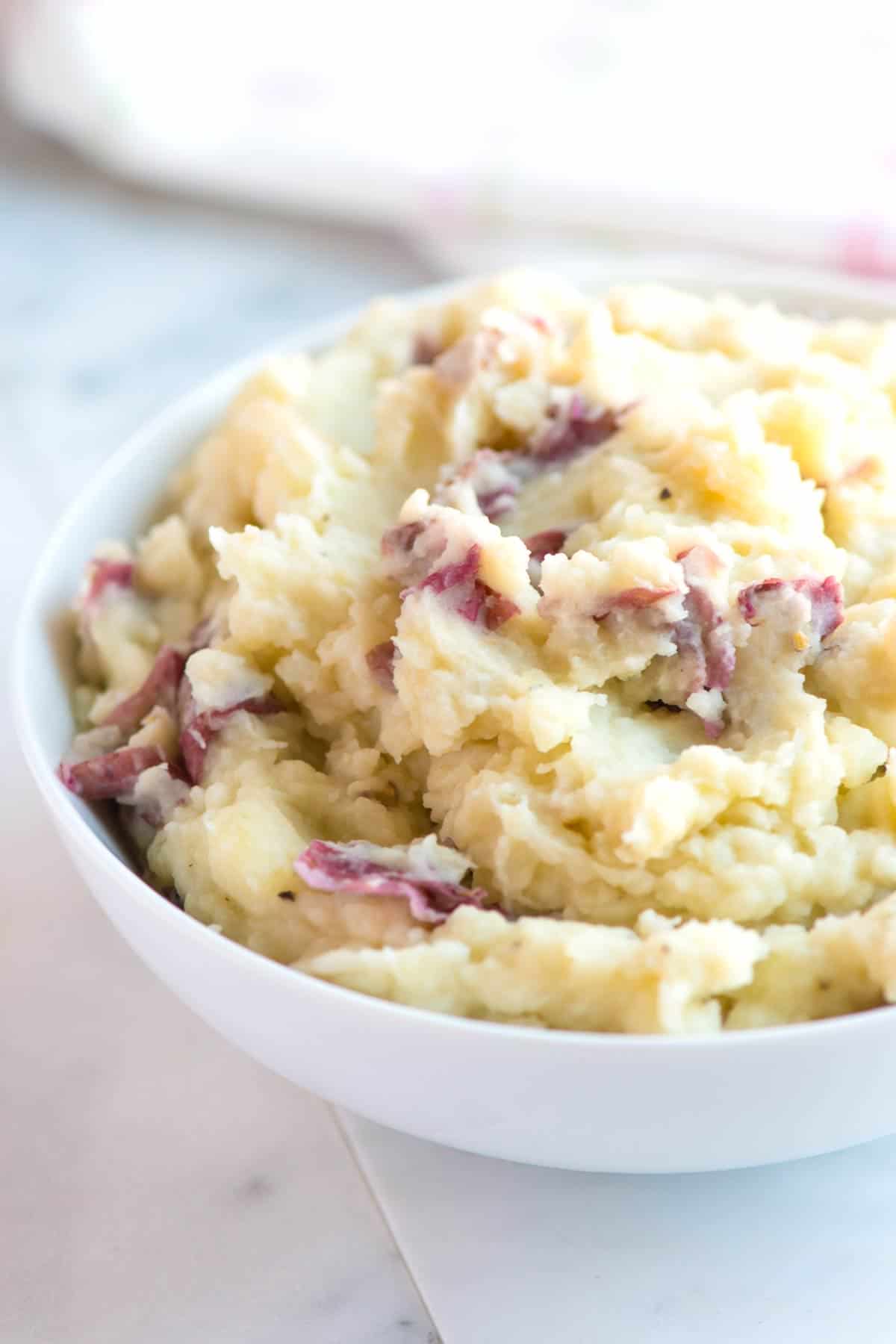
My family loves homemade mashed potatoes. Our mashed potatoes recipe changes slightly depending on who makes it.
Adam uses unpeeled potatoes for skin-on mashed potatoes, and I usually peel them. You can use either in our mashed potatoes recipe below! To use sweet potatoes, see our savory mashed sweet potatoes. I also love mashed potatoes on top of this Shepherd’s pie!
Key Ingredients
- Potatoes: The secret to the creamiest, most delicious mashed potatoes is to use the right potatoes. Thin-skinned potatoes like creamers, baby potatoes, and Yukon Gold are the best potatoes for mashing. Small yellow, white, or red potatoes are perfect. Russet potatoes are fine for mashed potatoes, but I prefer to peel them. Mashed potatoes made with Russets will be lighter and more fluffy.
- Milk or broth: I love equal parts milk and chicken broth, but use what you have. The broth adds flavor, and the milk keeps them creamy.
- Butter: I’m generous with the butter in my mashed potatoes and love the flavor it adds to our potatoes. You can use olive oil to substitute the butter, which tastes different but very delicious.
- Cream: It is optional, but when I have it in the fridge, I love adding a small splash of cream to make my mashed potatoes extra creamy and luxurious. When I don’t have cream, I love a dollop of sour cream or mascarpone cheese.
How to Make Mashed Potatoes
When making mashed potatoes, I cut them into chunks, and then simmer them in salted water. Medium chunks (1 to 2 inches) work well and take about 15 minutes. Similar to seasoning pasta water, use salted water to cook your potatoes. The seasoned water makes the potatoes taste better. I use 1 tablespoon of salt for a large pot of water.
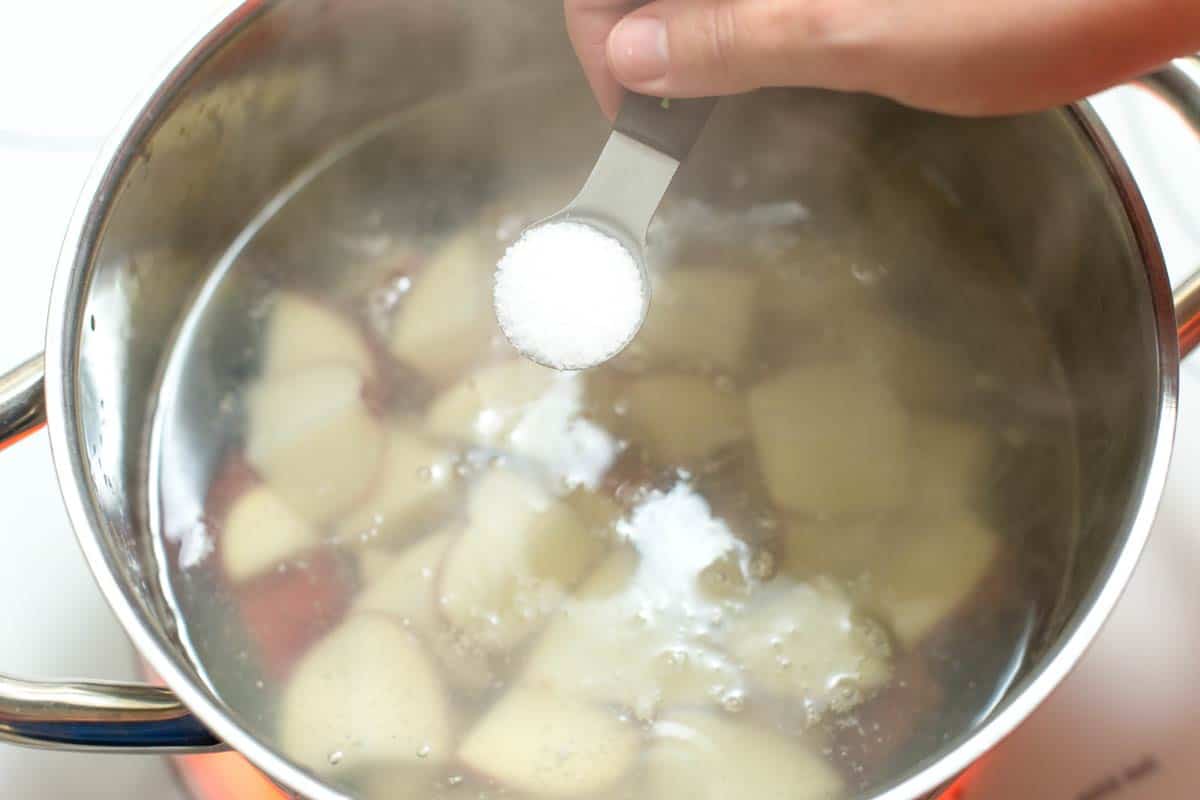
Simmer your potatoes until fork tender. I know my potatoes are ready for mashing when a fork can easily pierce them. Cooking them longer will make them too soft and sticky.
Then, after draining, return the cooked potatoes to your saucepan and cover with a clean dishtowel for about 5 minutes to help absorb excess moisture that can make mashed potatoes watery.
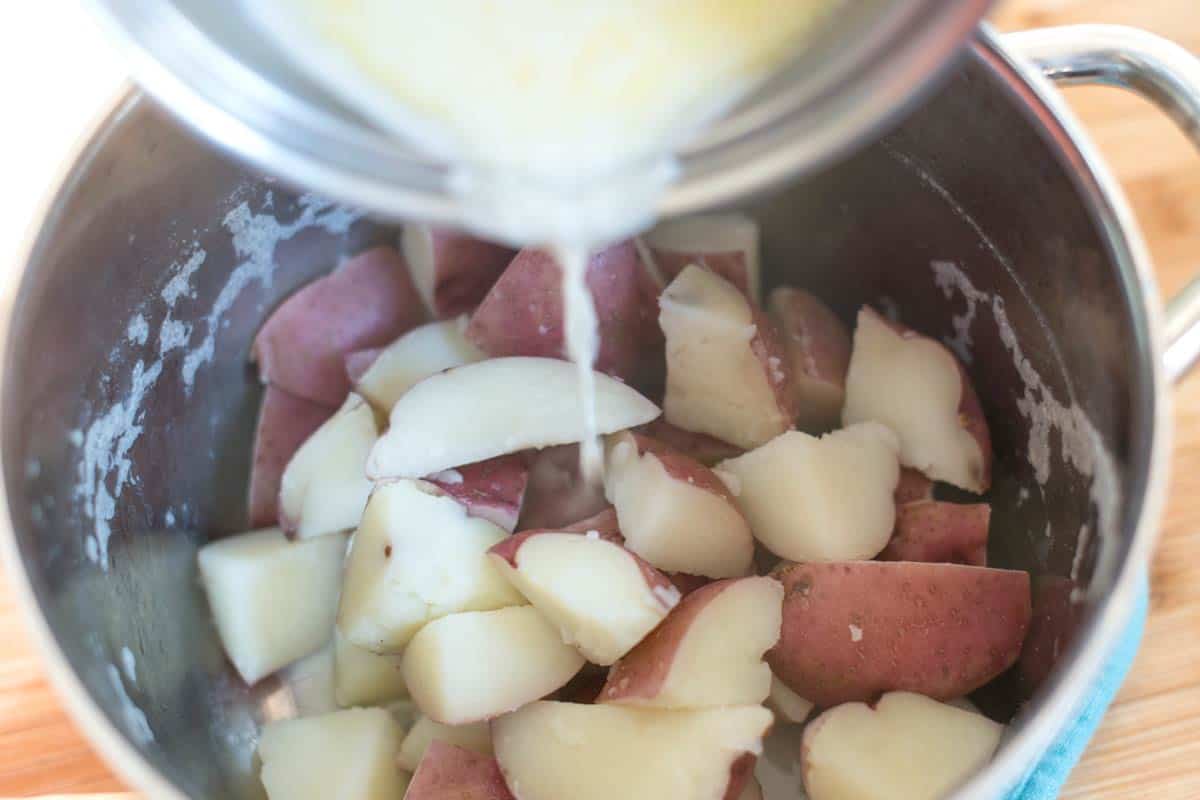
Use a potato masher or food mill to mash potatoes. Then stir in your milk or broth and butter. I like adding softened (or melted) butter. To make the mashed potatoes extra creamy, add a splash of cream. You can even add extras like roasted garlic, fresh chives, scallions, shredded cheese, and crumbled cooked bacon.
What to Serve with Mashed Potatoes
I can eat these mashed potatoes without anything else on the plate. They are fantastic with homemade gravy on top. I love them with roasted chicken, pork chops, and pork tenderloin. Mashed potatoes are classic with meatloaf (or this turkey meatloaf).
Every Thanksgiving, you’ll see these mashed potatoes with turkey gravy, amazing mushroom stuffing, and roasted garlic on the table. And just in case you need one, here’s my favorite roast turkey recipe!
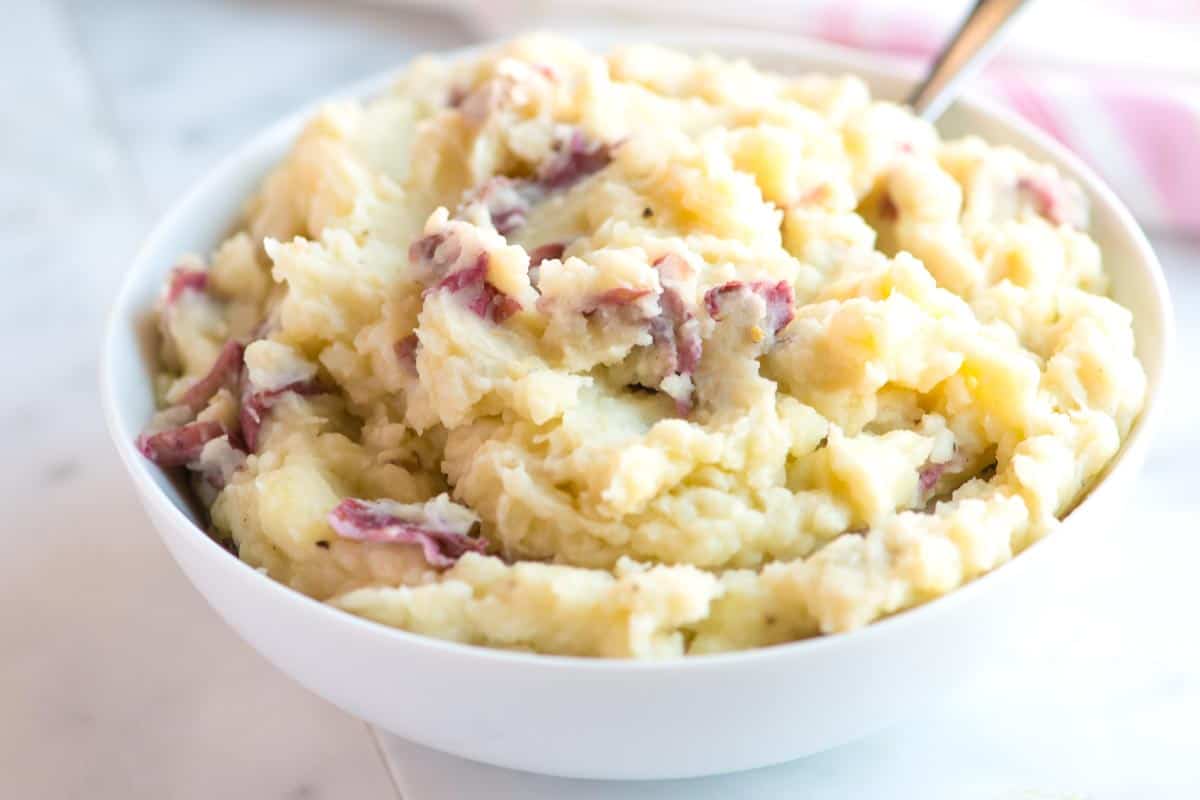
Perfect Mashed Potatoes
- PREP
- COOK
- TOTAL
This is how to make my family’s favorite homemade mashed potatoes. The recipe is flexible and can be adjusted based on the ingredients you have on hand. You’ll add about 1 cup of liquid to the potatoes. I love equal parts milk and chicken broth, but use what you have. For extra creamy mashed potatoes, add an extra splash of cream.
Watch Us Make the Recipe
You Will Need
2 pounds (900g) Yukon Gold potatoes, red potatoes, or white potatoes
Salt
1 cup (235ml) whole milk or broth, try homemade chicken broth
3 tablespoons (40g) butter or olive oil
1/4 teaspoon fresh ground black pepper
Splash of cream or a dollop of sour cream, optional
Directions
1Scrub and dice the potatoes, keeping them a similar size. We often leave the skin on the potatoes, but it is completely up to you.
2Add the potatoes to a large saucepan, add a tablespoon of salt, and cover with water. Bring to a boil over medium-high heat, then reduce to a low simmer.
3Cook until the potatoes fall apart when pierced with a fork, 15 to 20 minutes.
4While the potatoes cook, heat the milk, broth, and butter in a small saucepan over medium-low heat until warm and the butter melts.
5Drain the potatoes, return them to the pot, and cover them with a clean dishtowel. Leave them for about 5 minutes to absorb excess steam that can make mashed potatoes watery.
6Pour in the warm butter mixture, and then mash the potatoes until creamy. The potatoes seem thin at first, but they absorb the liquid after a minute or two. Stir in the pepper and splash of cream (optional).
7Taste for seasoning and adjust with additional salt and pepper. Let stand for 5 minutes so the potatoes thicken, then serve.
Adam and Joanne's Tips
- Storing: Homemade mashed potatoes can be stored in an airtight container in the refrigerator for up to 3 days. To freeze them, let them cool completely, then place them in a freezer-safe, airtight container.
- Reheating: To reheat mashed potatoes, do so in the microwave or on the stovetop over low heat. Consider adding an extra splash of milk or cream before reheating to prevent them from drying out.
- Freeze for up to 3 months. Thaw in the refrigerator overnight before reheating.
- You can use russet (baking) potatoes. The mashed potatoes will be a bit fluffier.
- Substitute brown butter for the butter to make brown butter mashed potatoes.
- For stiffer mashed potatoes, reduce the amount of liquid called for in the recipe to 3/4 cup from 1 cup.
- For extra creamy potatoes, use a food mill. Pass the cooked potatoes through the smallest disk of a food mill then stir in milk or chicken stock and butter. (It’s best the potatoes are peeled for this).
- The nutrition facts provided below are estimates. We assumed 1/2 milk to 1/2 stock and added a splash of cream.

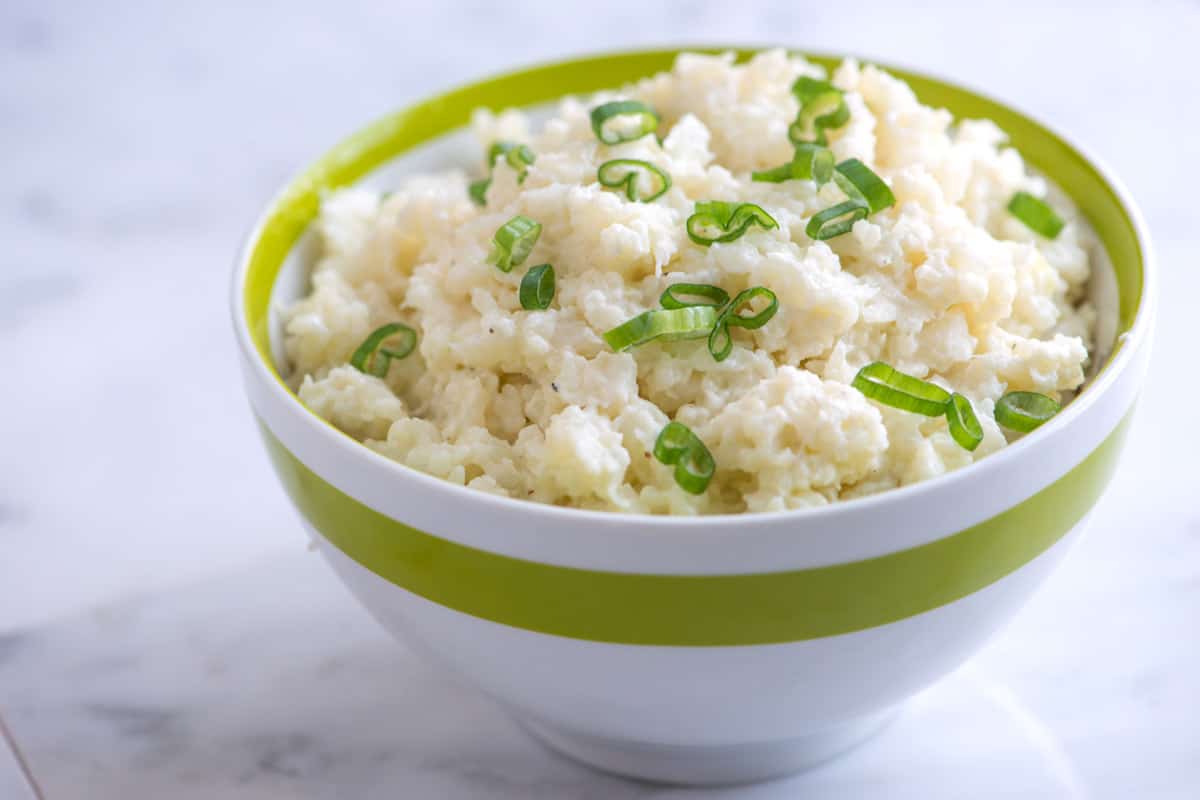
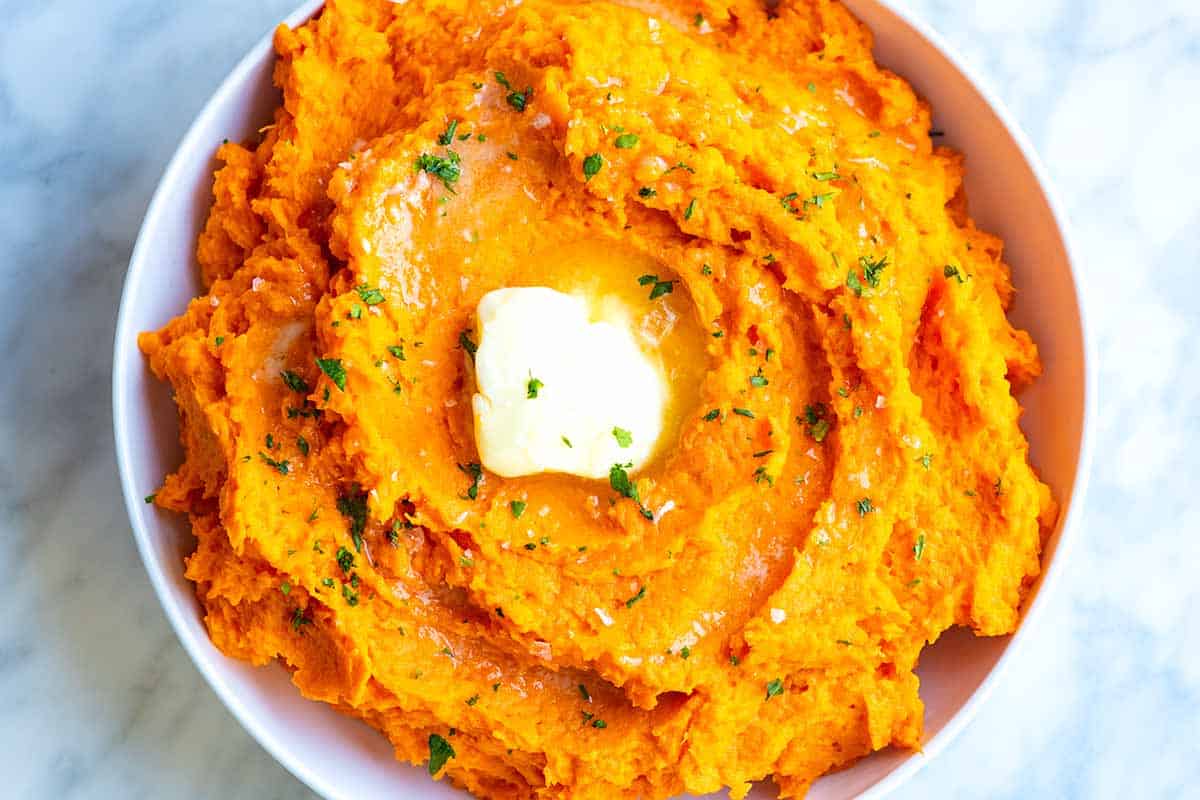
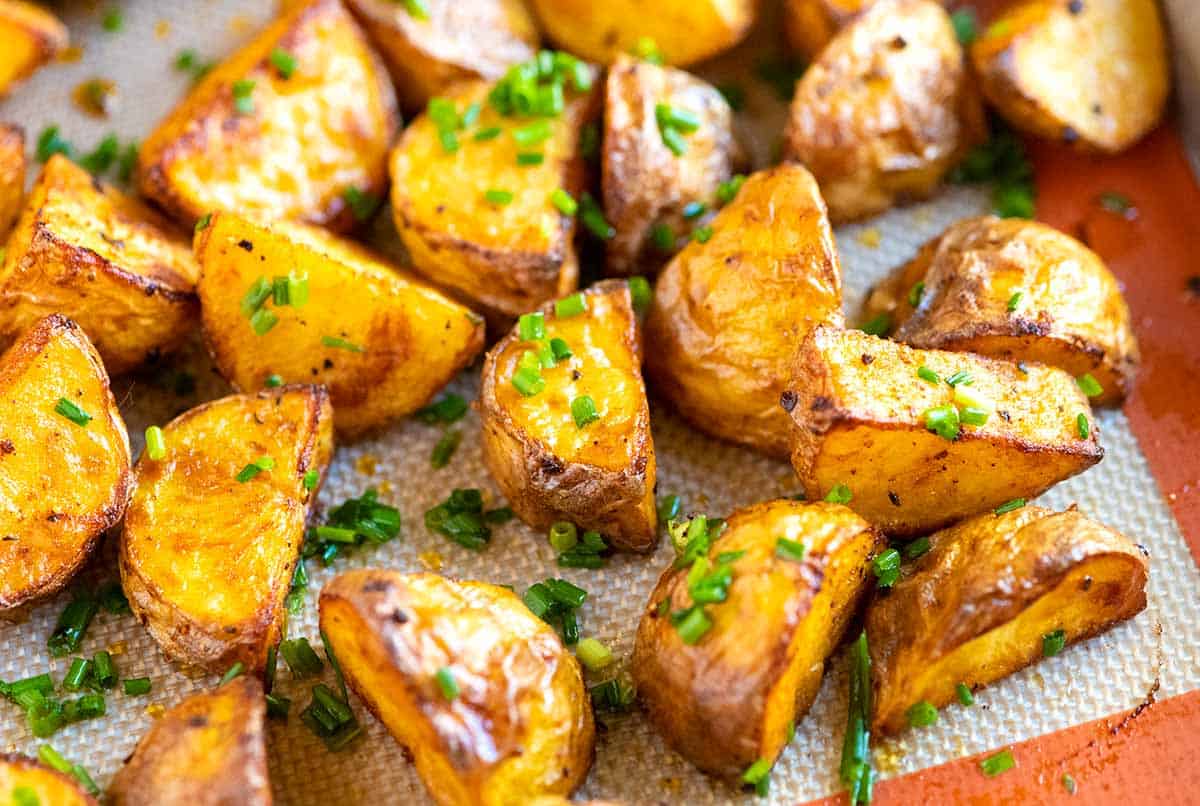
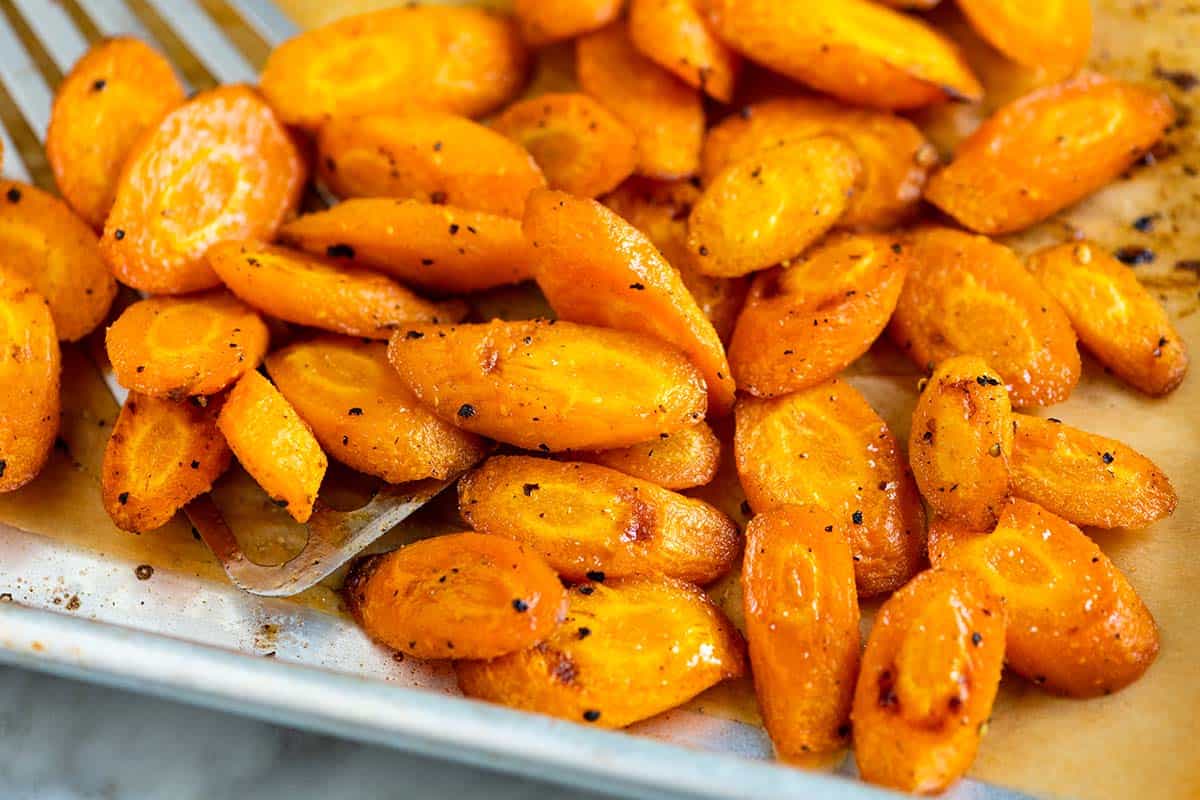
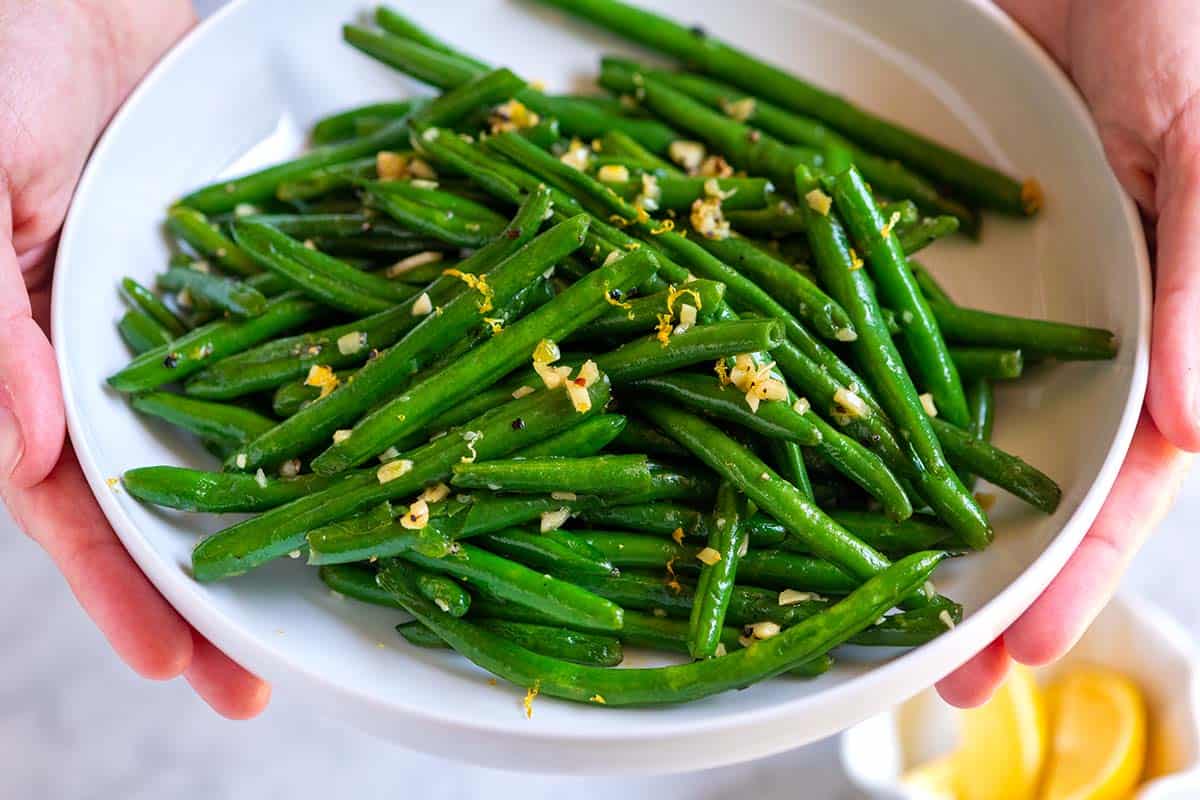
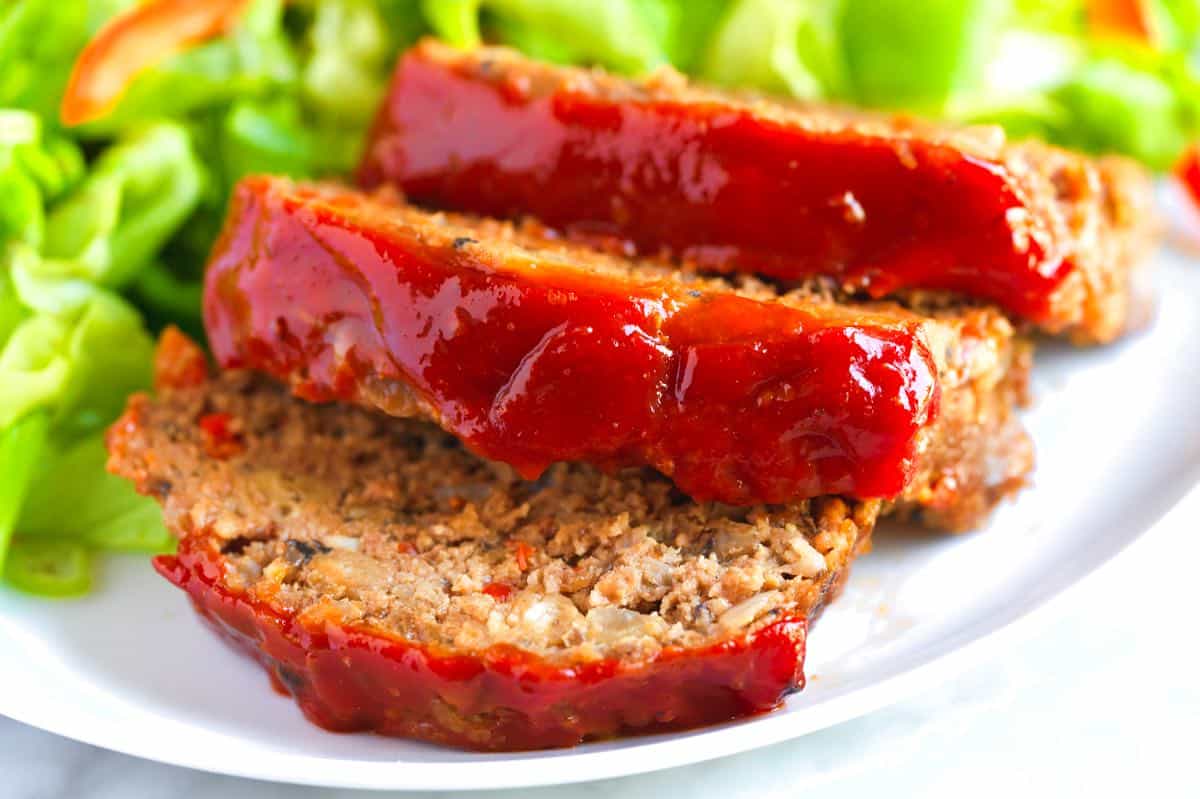


10/10 highly recommend. I used red potatoes, added fresh bacon and chives. I used course sea salt, garlic salt and pepper for my seasonings. Thank you!
Mashed Potatoes are the ultimate comfort food! This version, with its nutty brown butter and aromatic herbs, takes the classic to a whole new level. It’s a must-try for anyone looking to elevate their side dish game.
Really delicious & easy, thank you! I appreciate you explaining the different types of potatoes. I used baby potatoes and it turned out so well (No cream even needed. :P). I used a plant-based milk, and no broth. Also I mashed by hand as I also like some chunks to remain, like you pictured.
Your the best. Love your recipes. So complete and so wonderful.
Hi Linda, you have made our day 🙂
Excellent! They came out DELICIOUS when I made them for thanksgiving and everyone is asking me to make them again for Christmas!
I love your tips, they were super helpful!! Thank you 😊
This was my first time attempting to make mashed potatoes and my family was so impressed! There were no leftovers. Thanks for sharing this brilliant and easy recipe!
Can you make this recipe a couple hours ahead of time? Trying to prep for a for a dinner party and pairing it with meatloaf. Can’t to try them!!!!
Hi Michelle, you can make this ahead of time. You can keep it in the refrigerator until your dinner party.
Can these be made ahead of time and re-heated? Cant wait to try them! Thanks!
Yes, absolutely. I’d keep them covered in the refrigerator.
For the nutrition facts, what do you consider a serving of these? They’re delicious!!
Hi Ashley, The recipe makes 6 servings.
I would change one thing about this recipe. I was taught a long time ago that the less you cut up the potatoes the less water they will absorb. Thus a creamier mashed potatoes. I’ve had mashed potatoes that seemed soggy before. Haven’t you? I betchya it was bc they were cut up into small pieces so each piece more easily absorbed more water. I used to do this to make them cook as quickly as possible. Make the time to be able to throw in the potato whole. Big diff. Trust me.
Would you recommend low sodium chicken broth? And how about the butter? Salted or unsalted?
We usually reach for low sodium broth and often use unsalted butter, but you can use what you have in your kitchen. When it comes to seasoning the final dish, taste first then adjust with additional salt if you feel it necessary.
this was the easiest and yummmiest mashed potatoes i have ever made!!! 🙂 thank you again inspired by taste! I also cant remember where i read about it but i used a hand held mixer to mash the potatoes and mix it with the milk mixture! the result was great – it was creamy and fluffy even if it splattered initially.
I used russet potatoes because that is all I had on hand. The recipe is super simple and tastes great! I do add a little bit of garlic because I prefer garlic potatoes over regular. The skins on the russet potatoes are a little bit tougher so I am going to try red or yellow potatoes next time. I also added half a block of cream cheese and they were super creamy. Definitely my new favorite recipe, thank you!
I love the addition of cream cheese!
Made with equal parts red potatoes, peeled (baby) carrots, and peeled turnips. Don’t bother with foods mill or overly mashing, the lumpy heterogeneity is the whole idea. I didn’t need all the liquid, so don’t add all at once. Seasoned with equal parts herb salt (google NPR tuscan herb salt) and smoked
salt, but could be seasoned however you like to taste. Result was a unique delicious rustic root vegetable blend with lots more character than traditional mashed potatoes! So good.